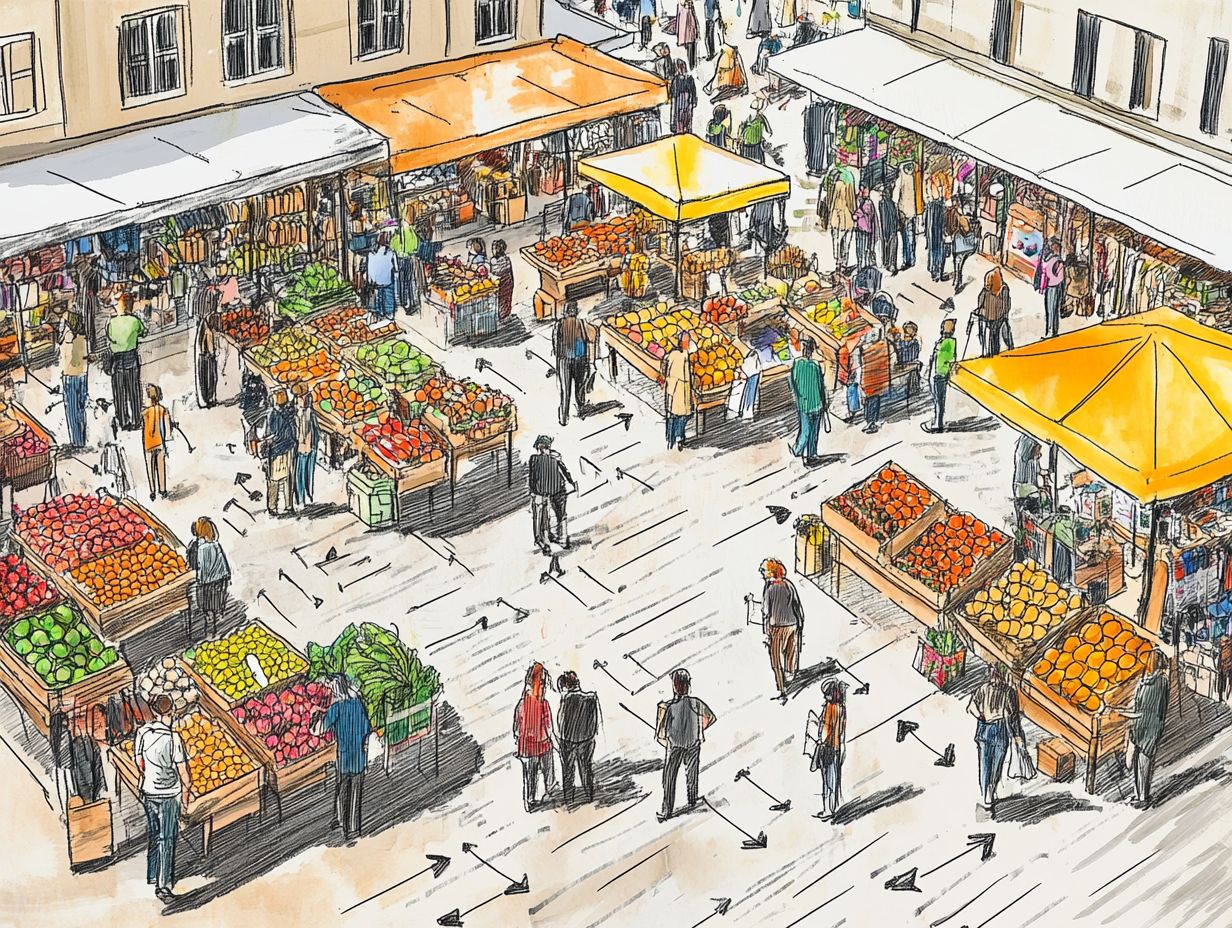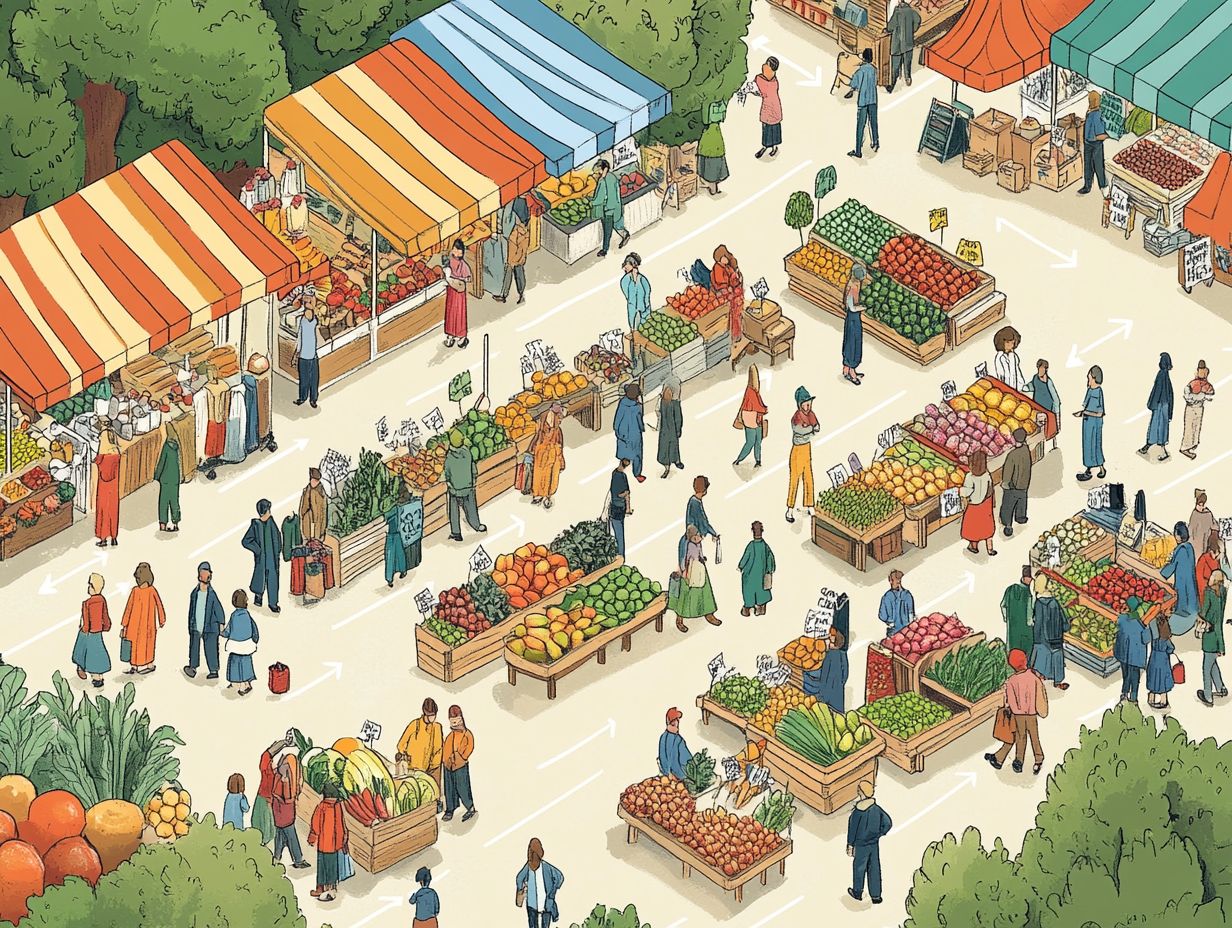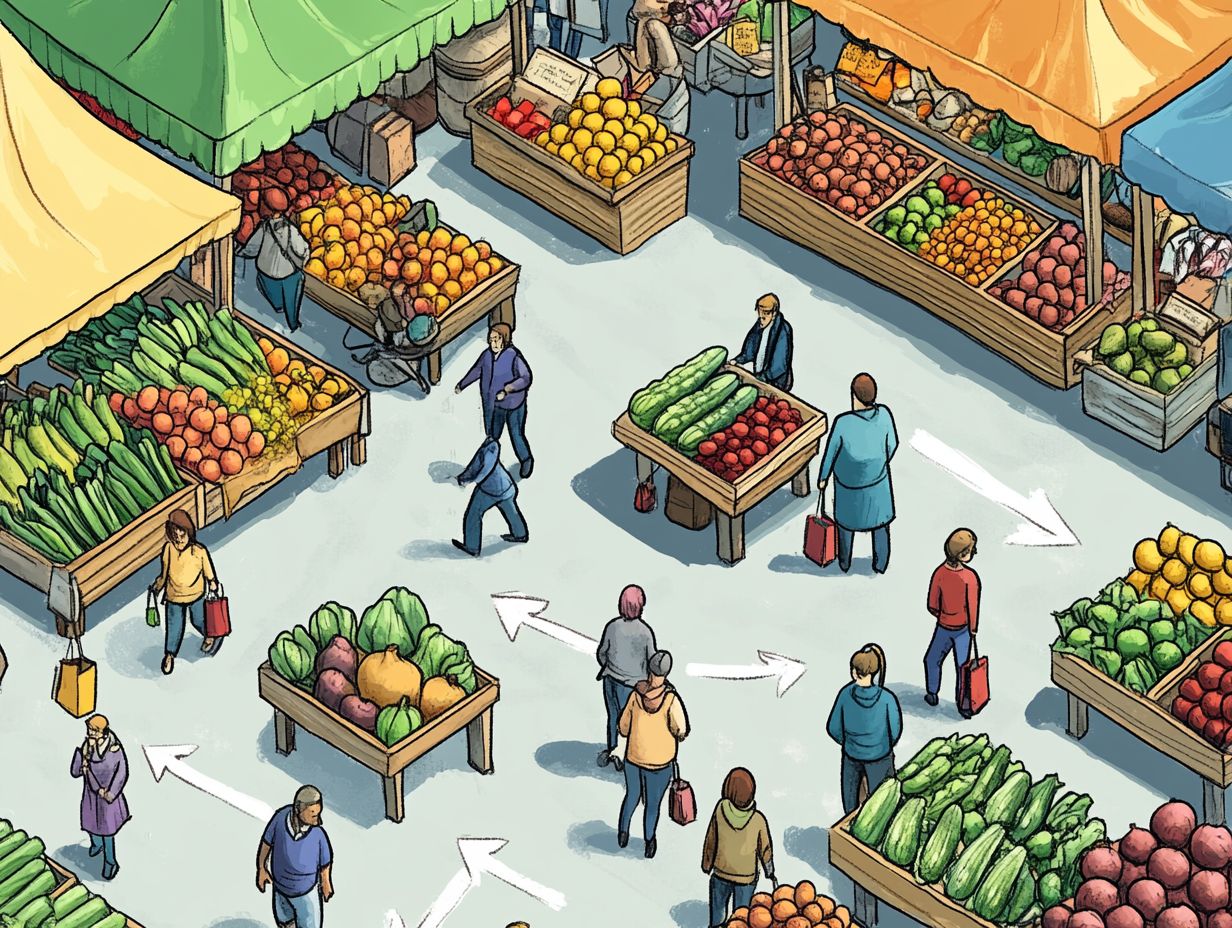Farmer’s markets are vibrant centers of community and commerce, and their success largely depends on effective market design and layout. A well-planned market can enhance customer experience and boost sales, whereas a poorly organized space may discourage shoppers and impact vendor sales negatively. This article examines how understanding foot traffic patterns and shopper demographics can inform layout decisions, providing tools and improvement strategies to gather essential data. By optimizing the layout based on these insights and consumer preferences, market organizers can maximize both sales and customer satisfaction, ultimately transforming how we enjoy local produce.
The Importance of Layout in Farmer’s Markets

The layout of a farmer’s market is crucial in shaping the shopping experience and influencing consumer behavior for consumers. It influences foot traffic, sales performance, crowd dynamics, and customer satisfaction.
By optimizing the layout, market organizers can enhance product visibility, improve spatial arrangement, make better use of available space, and promote community engagement by encouraging consumers to prefer purchasing local produce from vendors.
Understanding the principles of market design and accessibility enables those who create and manage markets to improve customer flow and enhance overall visitor interaction with the space, ensuring market accessibility for all.
Therefore, layout optimization and customer journey mapping are essential for ensuring that the shopping journey is enjoyable and motivating enough for consumers to return, fostering loyalty.
Impact on Sales and Customer Experience
The layout of farmer’s markets significantly impacts sales and customer experience, as an optimized vendor arrangement and spatial dynamics can influence consumer preferences and purchasing patterns in direct and measurable ways.
When vendors strategically optimize their layout, including product placement and booth spacing for effective space utilization, it enhances the customer experience. For instance, placing popular items at the front of booths or in high-visibility areas can catch customers’ attention and encourage impulse buys, contributing to market vitality.
Adequately spacing booths facilitates easier navigation and creates a more relaxed atmosphere, making customers feel comfortable while browsing, thereby enhancing shopping convenience. By optimizing layout to enhance the customer experience, consumer preferences and shopping patterns are positively affected, resulting in higher sales, as customers are more likely to spend longer in environments that are aesthetically pleasing and easy to navigate.
Understanding Foot Traffic Patterns

Understanding foot traffic patterns and visitor patterns is essential for optimizing the layout of farmers’ markets. Analyzing the demographics and traffic patterns of market visitors provides valuable insights into consumer preferences and behaviors, aiding in demographic analysis and market dynamics understanding.
Through comprehensive traffic analysis and use of analytical tools, farmers’ market organizers can identify peak visiting hours and high-traffic areas, also known as traffic hotspots, which can inform decisions regarding vendor placements and overall market efficiency.
By comprehending pedestrian movements and customer segmentation, organizers can improve customer flow and enhance the shopping experience, ensuring that vendors effectively reach their target customers.
Tools and Methods for Gathering Data
The use of advanced technologies and methodologies to measure foot traffic patterns is essential for the evidence-based design of farmers’ market layouts.
Tools such as interactive maps and traffic simulations, which inform spatial analytics and mapping techniques, provide marketers with a deeper understanding of how consumers interact with different market stalls and walkways.
These technologies offer real-time metrics and facilitate predictive modeling, enabling market managers to visualize how the layout might perform under various scenarios before any physical changes are implemented, supporting market innovation.
Additionally, implementing consumer feedback channels yields qualitative insights that complement the quantitative measurements of foot traffic, contributing to customer feedback loops.
Together, these tools and methodologies enable the visualization, tracking, and analysis of farmers’ market layouts, enabling decision-makers to improve market flow, enhance the shopper experience, and increase vendor sales through data-driven decisions.
Using Foot Traffic Insights to Optimize Layouts

Insights gained from foot traffic analysis can help optimize layouts in farmers’ markets by guiding decisions regarding vendor placement and space utilization.
By applying principles of flow analysis and ergonomic design, market planners can create layouts that enhance customer experiences, improve vendor traffic, and adapt to changing market conditions, ensuring layout responsiveness.
These insights reveal how consumers navigate and interact within the space, allowing for strategic placement of stalls, product visibility, and vendor interactions to maximize sales performance and customer satisfaction.
Key Considerations and Strategies
The layout of farmer’s markets should prioritize accessibility features and positioning, as these two factors significantly impact the quality of the shopping experience. By considering these elements, market planners can create designs that foster community engagement and ensure easy access for all visitors, enhancing market functionality.
For instance, wider pathways can be designed for strollers and wheelchairs, while vendor arrangements can be structured to promote interaction among shoppers, enhancing market accessibility and shopper retention. Regularly assessing the layout based on visitor feedback is essential for continuous improvement and layout flexibility.
Planners can gather feedback through surveys, suggestion boxes, or informal conversations with customers to gain insights into their experiences and consumer behavior trends. This input can help determine if adjustments are needed to enhance visitor interaction and convenience, which may include changes in vendor placement, signage, and traffic flow, ensuring operational efficiency.
Maximizing Sales and Customer Satisfaction

The sales and customer satisfaction of farmers’ markets can be maximized by optimizing the layout and utilizing engagement metrics that reflect consumer preferences, behaviors, and market trends.
Tips for Implementing and Maintaining an Effective Layout
Implementing and maintaining an effective layout in farmers’ markets requires strategic event planning and ongoing layout testing to adapt to the evolving needs and preferences of visitors, ensuring layout effectiveness.
Marketing strategies aimed at attracting foot traffic and encouraging repeat visits are essential components of a successful market layout and market sustainability. Market organizers should prioritize creating an inviting atmosphere that encourages foot traffic and enhances the overall experience, boosting market atmosphere.
Utilizing directional signage can help guide visitors smoothly through the market while highlighting featured vendors and seasonal products, capitalizing on seasonal trends. Establishing a loyalty program is also crucial for boosting repeat visits; offering incentives such as discounts, early access to special sales, or exclusive events for frequent shoppers can foster a sense of community and shopper retention.
Additionally, engaging with customers through social media promotions and utilizing email newsletters as promotional strategies can keep patrons informed about upcoming market events and special offers, ultimately driving higher engagement and community support.






